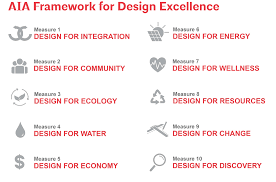The Importance of Strategic Brand Development
In today’s competitive business landscape, strategic brand development plays a crucial role in shaping the success and longevity of a company. Building a strong and recognisable brand is not just about creating a catchy logo or a memorable tagline; it involves a comprehensive strategy that aligns with the company’s values, vision, and goals.
Building Trust and Credibility
A well-developed brand strategy helps establish trust and credibility with your target audience. Consistent branding across all touchpoints conveys professionalism and reliability, making customers more likely to choose your products or services over competitors.
Creating Emotional Connections
Effective brand development goes beyond just selling products; it involves creating emotional connections with consumers. By defining your brand’s personality, values, and voice, you can resonate with your audience on a deeper level, fostering loyalty and long-term relationships.
Differentiation in the Market
In a crowded marketplace, strategic brand development is essential for setting your business apart from competitors. A unique brand identity that communicates what makes your company special can help you stand out and attract the right customers who align with your values.
Driving Business Growth
A well-crafted brand strategy not only enhances customer perception but also drives business growth. By clearly defining your brand positioning and messaging, you can attract new customers, retain existing ones, and ultimately increase revenue and market share.
Adapting to Changing Trends
Strategic brand development is an ongoing process that requires adaptation to changing market trends and consumer preferences. By staying agile and responsive to shifts in the industry landscape, you can ensure that your brand remains relevant and resonates with your target audience.
In conclusion, strategic brand development is not just a marketing tactic; it is a fundamental aspect of building a successful business. By investing time and resources into developing a strong brand strategy, companies can create lasting impressions, drive growth, and secure their position in the market for years to come.
Seven Key Benefits of Strategic Brand Development: Building Trust, Differentiation, and Growth
- Builds trust and credibility with customers
- Creates a strong emotional connection with the target audience
- Helps differentiate the brand from competitors
- Drives business growth and increases market share
- Enhances brand recognition and memorability
- Ensures consistency in messaging and branding across all channels
- Adapts to changing market trends and consumer preferences
Challenges in Strategic Brand Development: Costs, Time, Risks, Alignment, and ROI Measurement
- Costly investment in brand research and development
- Time-consuming process to establish a consistent brand identity
- Risk of alienating existing customers with rebranding efforts
- Potential for misalignment between brand messaging and customer perceptions
- Difficulty in measuring the direct ROI of brand development initiatives
Builds trust and credibility with customers
Building trust and credibility with customers is a key advantage of strategic brand development. By consistently delivering on brand promises and maintaining a cohesive brand identity across all interactions, companies can establish a strong sense of reliability and professionalism. This trust not only fosters customer loyalty but also encourages repeat business and positive word-of-mouth referrals, ultimately contributing to long-term success and sustainable growth in the market.
Creates a strong emotional connection with the target audience
Strategic brand development excels in creating a powerful emotional bond with the target audience. By crafting a brand identity that resonates with the values, aspirations, and emotions of consumers, companies can foster deep connections that go beyond mere transactions. This emotional engagement not only builds loyalty and trust but also ensures that customers become advocates for the brand, driving long-term success and sustainable growth.
Helps differentiate the brand from competitors
Strategic brand development plays a vital role in helping businesses differentiate themselves from competitors in a crowded marketplace. By defining a unique brand identity, values, and positioning, companies can stand out and attract the right audience who resonate with their offerings. This differentiation not only sets the brand apart but also creates a competitive advantage that can lead to increased customer loyalty, market share, and long-term success.
Drives business growth and increases market share
One of the key advantages of strategic brand development is its ability to drive business growth and increase market share. By establishing a strong and distinctive brand identity that resonates with target customers, companies can attract new clients, retain existing ones, and ultimately expand their market presence. A well-crafted brand strategy not only enhances customer perception but also differentiates the business from competitors, leading to increased revenue, profitability, and a larger share of the market.
Enhances brand recognition and memorability
Strategic brand development enhances brand recognition and memorability by creating a cohesive and consistent brand identity that resonates with consumers. Through thoughtful design elements, messaging, and storytelling, a well-developed brand strategy ensures that the brand stands out in the minds of customers, making it easier for them to recall and identify the brand among competitors. This increased recognisability not only fosters trust and loyalty but also helps drive customer engagement and preference towards the brand.
Ensures consistency in messaging and branding across all channels
Ensuring consistency in messaging and branding across all channels is a key advantage of strategic brand development. By maintaining a unified voice, visual identity, and brand personality across various touchpoints such as social media, websites, advertising, and customer interactions, companies can build trust and recognition with their audience. Consistent branding reinforces the brand’s values and messaging, creating a cohesive brand experience that resonates with customers and strengthens brand loyalty. This alignment helps establish a clear and memorable brand identity that sets the company apart from competitors and fosters long-term relationships with consumers.
Adapts to changing market trends and consumer preferences
Strategic brand development offers the significant advantage of being able to adapt to changing market trends and consumer preferences. By staying attuned to shifts in the industry landscape and understanding evolving consumer behaviours, a well-developed brand strategy can remain relevant and resonate with target audiences. This adaptability ensures that businesses can proactively adjust their branding efforts to meet the dynamic demands of the market, staying ahead of competitors and maintaining a strong connection with customers over time.
Costly investment in brand research and development
Strategic brand development, while essential for long-term success, can pose a significant challenge due to the costly investment required in brand research and development. Conducting thorough market research, competitor analysis, consumer surveys, and brand positioning studies can incur substantial expenses for businesses, especially for small enterprises with limited budgets. The financial commitment needed to gather insights and develop a comprehensive brand strategy may deter some companies from fully realising the benefits of strategic brand development, creating a barrier to entry for those seeking to establish a strong brand presence in the market.
Time-consuming process to establish a consistent brand identity
Establishing a consistent brand identity through strategic brand development can be a time-consuming process that requires careful planning and execution. From defining brand values and messaging to creating visual assets and ensuring alignment across all communication channels, maintaining consistency can be challenging and resource-intensive. The need to conduct market research, gather feedback, and iterate on branding elements adds to the complexity of the process. However, despite the time investment required, the payoff of a cohesive and recognisable brand identity that resonates with customers can significantly impact long-term success and brand loyalty.
Risk of alienating existing customers with rebranding efforts
When embarking on strategic brand development, one significant con to consider is the risk of alienating existing customers with rebranding efforts. Changing key elements of a brand, such as its logo, colour scheme, or messaging, can sometimes confuse or even upset loyal customers who have grown accustomed to the familiar brand identity. This disconnect may lead to a loss of trust and loyalty among existing customers, potentially resulting in decreased customer retention and satisfaction levels. Careful consideration and effective communication are essential when implementing rebranding strategies to mitigate the risk of alienating the very customers a company has worked hard to build relationships with over time.
Potential for misalignment between brand messaging and customer perceptions
A significant drawback of strategic brand development is the potential for misalignment between brand messaging and customer perceptions. Despite careful planning and execution, there is always a risk that the intended message may not resonate as expected with the target audience. This misalignment can lead to confusion, distrust, or a disconnect between what the brand promises and what customers perceive, ultimately hindering the effectiveness of the branding efforts and impacting customer loyalty and engagement. It is crucial for businesses to continuously monitor and adapt their brand strategies to ensure that they align closely with customer expectations and preferences.
Difficulty in measuring the direct ROI of brand development initiatives
One significant challenge of strategic brand development is the difficulty in measuring the direct return on investment (ROI) of brand development initiatives. Unlike more tangible marketing efforts that yield immediate results, such as sales promotions or advertising campaigns, the impact of branding activities on financial performance can be harder to quantify. Brand building is a long-term investment that involves building awareness, shaping perceptions, and fostering customer loyalty, making it challenging to attribute specific financial gains directly to brand development efforts. This ambiguity in measuring ROI can pose a hurdle for businesses seeking concrete evidence of the effectiveness of their branding strategies.




